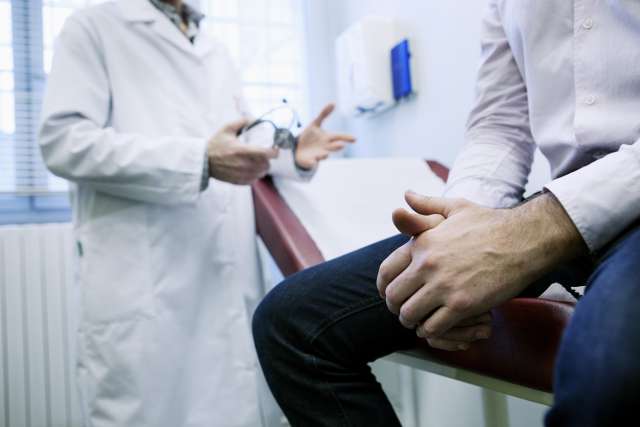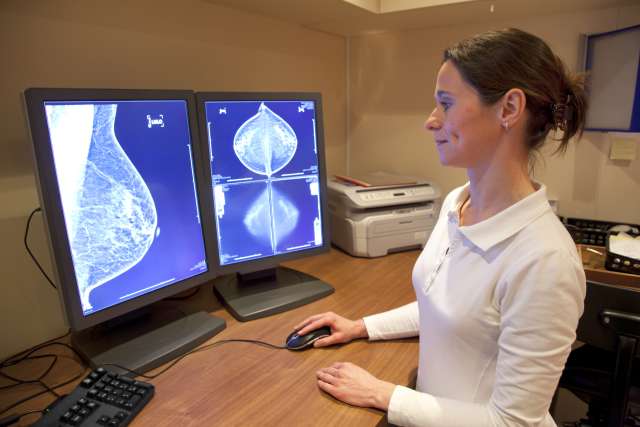A new advance in radiation-therapy equipment is giving physicians the ability to better visualize tumors and internal anatomy, allowing more accurate delivery of necessary treatments.
The equipment, called the MRIdian LINAC, is an improvement over older technologies, because it uses a built-in MRI to guide radiation treatment in real time, explains UCLA Health radiation oncologist Amar Kishan, MD.
“This makes a critical difference,” says Dr. Kishan. “MRIs have a much better spatial resolution than a CT scan,” which has been the traditional method to locate and map out areas that need to be treated but has limitations because it does not always provide the clearest picture of internal anatomy, particularly in the abdomen and pelvis.

Because MRIdian can see and track soft tissue and tumors in real time, it “allows physicians to adjust radiation treatment to more accurately deliver this therapy at the right dosage and to exactly the right area,” Dr. Kishan says. This form of external beam radiation therapy allows radiation oncologists to provide treatment while reducing the exposure of healthy tissues.
The MRIdian is available only at a limited number of major medical centers, including UCLA, which began using it in December 2019 at Ronald Reagan UCLA Medical Center. The technology can be employed to treat any type of soft tissue cancer and tumor, and it is being used by UCLA Health Jonsson Comprehensive Cancer Center in multiple clinical trials for pancreatic cancer, sarcomas and prostate cancer.
“This new technology has particular advantages for patients with prostate cancer, which is why we have two major clinical trials ongoing,” Dr. Kishan says. “One is for patients who have not had surgery, and the other is for patients who have had surgery and need radiation afterwards.”
Because of MRIdian’s improved effectiveness in accounting for daily changes in anatomy, Dr. Kishan and his research team are able to safely deliver higher doses of radiation to patients. Dr. Kishan explains that after prostate cancer surgery, for example, the treatment is delivered in the space between the bladder and the rectum. These two organs change in size. This makes the MRI-guided treatment with better resolution an improved option for more precise prostate cancer treatment.
In previous studies, Dr. Kishan has found that treatment for some cancers with higher doses of radiation over a shorter period of time can be as successful as a significantly longer course of treatment. For example, in one such previous study, the results showed that radiation therapy sessions could be cut down from 45 days to four or five days. Importantly, the shorter course of treatment had the same successful outcomes as the longer course of treatment.
“During a pandemic, and even outside of a pandemic, it can be beneficial to have patients come in to the hospital to be treated over a shorter period of time,” Dr. Kishan says. “Most men with low- or intermediate-risk prostate cancer, for example, who undergo conventional radiation must come in daily for treatment that takes an average of nine weeks to complete. That can be very burdensome on a patient. With the improvements we are seeing with a device like MRIdian, treatment can be delivered safely and effectively in a much shorter time frame without additional toxicity or compromising any chance of a cure.”
Other research has found that such treatment is more cost effective because of the fewer treatments involved and that it has psychological benefits such as less regret about undergoing treatment.
This can be an added value for patients such as Dan Howe, a retired Navy pilot.
Howe underwent surgery for prostate cancer a year earlier, but there still remained indications of cancer. A routine blood test confirmed that his cancer had returned. Howe, a physically active man in his 70s, wanted to balance his quality of life and the time he spends with his family with the amount of time he needed to spend being treated. The UCLA Health clinical trial with the new equipment was a good fit for him.
“You’re working on a time frame with cancer,” says Howe. “And if you are going to go after it, you need to get after it and not wait around. I’m positive that this short-course of treatment is right for me.”
Duane Bates is the author of this article.




